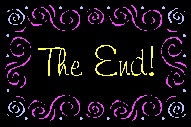 “Hi, Beth,” waved Justin.
“Hi, Beth,” waved Justin.
“Why, Justin, I haven’t seen you since our high school prom six years ago, the one where our mutual friend, Erik, got suspended for spiking the punch,” gushed Beth.
“Ho, ho,” chortled Justin. “Those were the days! He went on to become a successful, if whacky and innovative executive with an online social network. What have you been doing since then?” he queried.
“As you know, my family life was difficult and I had many obstacles to overcome, but I triumphed by speeding through college in record time, completing my undergraduate, double major degree in only two years, and am graduating from medical school next week,” Beth elaborated.
Are you bored yet? Grinding your teeth and wanting to throw this story across the room? I am; it was painful writing it!
Good dialogue can carry a story; conversely, badly written dialogue can sink one faster than the Titanic’s spectacular and ignominious end. Many resources are available, from Renni Browne and Dave King’s Self Editing for Fiction Writers, Second Edition to Write Great Fiction: Dialogue by Gloria Kempton, and more. If a good book on the craft of writing dialogue doesn’t reside on your shelf, I strongly suggest you consider acquiring one.
Let’s examine this fragment to see why it’s so grating. There are four issues here: dialogue tags, stilted language, indistinct voice, and information dump.
Dialogue tags are the words we use to indicate that a character is speaking. When I wrote the first draft of my first novel, I spent hours dreamily staring into space while trying to conjure the cleverest dialogue tags ever. My characters retorted, snorted, coughed, shivered and quivered their lines. After reading the above example, you can see how awful it was!
In reality, you only need a few simple guidelines.
1. Use the word ‘said’ whenever necessary. It’s an almost invisible word to the reader, whereas all the chortles, queries, etc. do nothing but draw attention to the author—not the story. The author should be entirely invisible, and your goal is to keep the reader engrossed in the story, not yanked out by strange word choices.
2. Keep in mind that physical actions are not involved in uttering speech. Rather than succumb to the temptation of using the action as a tag, use it in a separate sentence as a ‘beat’ that reveals body language and moves the story forward. For example: Justin pulled up short when he recognized the woman approaching him. A spurt of pleasure shot through him, and he waved. “Hi, Beth!” (Note how this example could go any number of directions. Maybe he wanted to avoid her, but couldn’t; maybe his response is anger over an unresolved conflict. Whatever the case, the greeting becomes much more complex and compelling.)
3. If only two persons are involved in a stream of dialogue, omit tags entirely. This works especially well when the characters’ voices are so different that it is obvious who is speaking by their speech patterns. But don’t be afraid to add an occasional beat to keep it clear for the reader.
Which leads us to stilted language and indistinct voice.
The best way to avoid stilted language is to read your dialogue out loud. If it feels or sounds awkward, change it. Each character should have distinctive speech patterns, too; make sure the words and delivery you choose remains authentic to the individual character. As you read the dialogue out loud, it should be obvious which character is speaking at any given time. Let’s make Justin a Texas cowboy and Beth a California Valley girl (yes, I know I’m dating myself, but it’s an easy ‘dialect’ to show for our purposes).
Now we have: A spurt of pleasure shot through Justin when he recognized the woman approaching him on the sidewalk. He whipped off his ten-gallon hat and waved. “Howdy, Beth! I ain’t seen you for a coon’s age.”
Beth, preoccupied with her Smartphone, lifted her gaze. A smile wreathed her face and she squealed. “Ohmygosh! Justin! It’s been, like, too-too long! Since high school?” As you can see, these two wildly different styles will never overlap in dialogue. Not all characters will be such polar opposites, but if you give each character a distinctive voice, whether through style (i.e., women tend to use longer sentences, while men tend more toward brief statements) or specific verbal traits, it will strengthen both their characterization and their dialogue.
A word about foreign words and idioms: a little goes a long way. If your character is fluent in French and sprinkles French phrases into her speech, limit those to one every few pages. If a character’s speech is very back-woodsy and old fashioned, pick one word to highlight that pattern and write the rest in ‘regular’ English. For a southern drawl or an Irish brogue, use that as a descriptor outside of the dialogue and use word choice and placement to reinforce the pattern. Trust your reader to catch on. They will.
Last: information dumps. This is where characters bring in information that the author wants the reader to know but doesn’t have an organic way to get it across. Hence, awkward dialogue that no one in real life would use, such as: He went on to become a successful, if whacky and innovative executive with an online social network.
When you find those in your writing, ask yourself if the information is truly important. If so, is it crucial at this point in the story? If yes, then find a more relaxed way to get it into the story, either as internal dialogue (Beth’s mind went back to the last time she’d seen Justin. The high school prom. The one where Erik had been suspended for spiking the punch. “Justin! It’s been years!”), or in more natural sounding dialogue (“Justin! It’s been years!” Beth’s face heated at the memory of their high school prom. “I’m still embarrassed at how I acted after—“ She broke off her sentence, and Justin, grinning, finished it for her. “After Erik spiked the punch.”
Dialogue can make your story sing, and those who can do it well often do well on other aspects of the craft. As a plus, the more of your story you can tell via dialogue, the better the structure will be, so it’s worth the effort to improve your skills in this area.
What are your tricks or tenets about writing dialogue? This has been a quick and dirty, and by no means comprehensive look at writing dialogue. Please share your experience!








